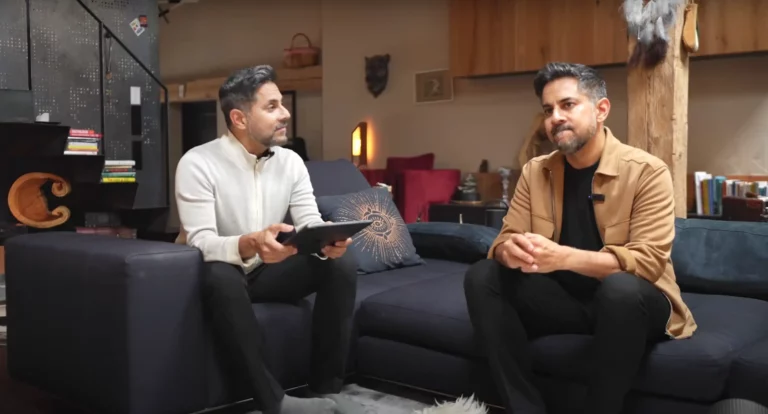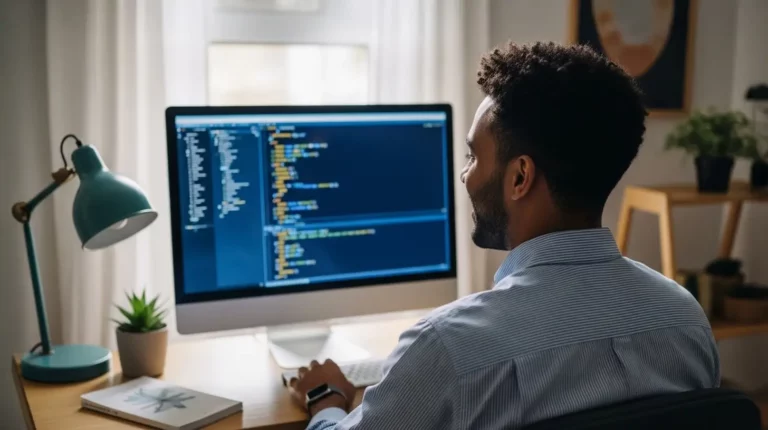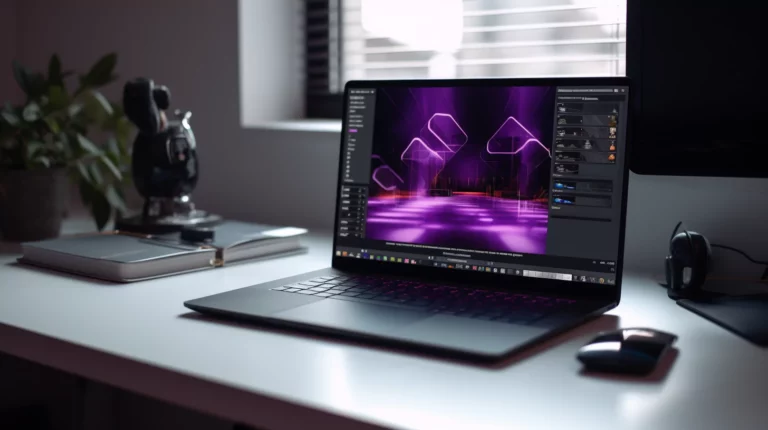In this era of distraction, knowing how to focus is crucial. With so much going on around us at any given moment, it can become a struggle to concentrate on the one activity, task, or even person in front of us.
Let’s face it: we’re all world-class jugglers. We’re constantly throwing and catching the million and one things that are up in the air—working hard, playing harder, catching the latest episode of House of the Dragon, doing school runs, cooking meals, making a TikTok video, and so on and so forth.
The consequences? Possible anxiousness, followed by all the excuses of the rainbow to procrastinate.
Enter Nir Eyal, author of Indistractable: How to Control Your Attention and Choose Your Life. This habit-forming expert has incredible insights to help take back control of your focus and improve your concentration. Plus, he has a few tricks up his sleeve that can help train your brain to stay focused.
The thing is, your attention is your biggest asset. And to get you one step closer to an “indistractable” life, it’s important to learn how to focus better and keep it where it’s supposed to be—on the task at hand.
Why can’t you focus?
Distractions, temptations, and the hundreds of thoughts in your mind at any given minute—these are negative internal and external triggers that may cause you to have trouble focusing.
If you could eliminate all of these, it would be just you and your laser-focused mind. (Or what Nir calls “indistractable.”)
However, life doesn’t always work like that. In fact, plenty of research looks into people’s level of concentration nowadays. Here are three to highlight:
- A study by Microsoft highlights the effects of a digitalized lifestyle on the brain. It found people generally lose concentration after eight seconds. This research was done in 2015. Can you imagine what is now with technology being more pervasive and more persuasive than ever before?
- If you guessed that people’s attention spans are shortening, then you’re right. A 2016 study by Google found that 53% of mobile website visitors will leave if the page doesn’t load within three seconds.
- What’s more, another study by Facebook found that, on average, people are only spending an average of about two-and-a-half seconds on a social media video before they move on to the next.
Make no mistake, advancement of any kind is a good thing. Still, there’s a price to living in a world of progress and abundance.
The more our world gets modernized, the more we have to learn how to increase focus and become indistractable. Nir adds, “Even though [technologies] are fantastic, I believe that we can find a way to get the best out of them without letting them get the best of us.”
6 things that can kill your focus and concentration
Distractions aren’t a new concept. In fact, the Greeks called it accracia, which is the tendency to do things against our better interests.
So what contributes to the lack of focus and concentration? A survey of 1,500 people in the United States by Solitaired.com looked into the top distractions at work. Here are five that made their list:
- Work interruptions (25%). This includes co-workers, sending and replying to emails, unproductive meetings, and too many meetings.
- Games (23.4%). Regardless if it’s on the computer or on the phone, games are a prime attraction. No surprise, they can also be time-wasters.
- Phone (21.3%). Checking social media and answering text messages or calls, it’s no wonder we have such a hard time putting down our phones.
- Disorganization (20%). Our brains love it when there’s a place for everything and everything’s in its place. So when our workspace is cluttered or the calendar is in shambles, it does nothing to improve memory and focus.
- Kids and pets (17.1%). This may apply more to those who have the option of working remotely or hybrid. Regardless, kids and pets get bored, tired, hungry, or need quality time, so they take up a lot of attention.
- To-do lists (14.9%). It creates a false sense of productivity. They have no constraints, which can tend to lead to procrastination.
Although the effects of distractions at work vary, the bottom line is that it all results in less focus and less productivity. But the good news is, with tips from Nir, you can master this high-performance habit of being indistractable.

4 tips to improve focus from Mindvalley trainer Nir Eyal
Distraction is an unhealthy escape from reality. As a result, we lie to ourselves.
We say we’re going to do some yoga, but we don’t. Or we say we’re going to eat right, but we wouldn’t. We say we’re going to meditate, but we skip that.
The golden question is: how do we get out of our own way so we can finally do the things we know we should do to have the kind of lives we deserve?
According to Nir in Mindvalley’s Becoming Focused and Indistractable Quest, it takes these four things:
1. Master your internal triggers
Contrary to popular belief, the opposite of distraction is not focus. It’s actually traction. While distraction stops you from achieving your goals, traction leads you closer to them.
So what causes you to move away from or towards what you really want? Triggers. And when it comes to mastering internal cues, Nir suggests shifting your mindset about them.
For example, say you have the urge to look at your phone in the middle of a work task. Rather than trying to fight the urge, recondition your mind. Maybe set a time limit to focus on your work task, and after that’s done, you can have a ten-minute date with your phone.
Seek relief from the triggers in a reflective way rather than a reactive way. This helps stop you from impulsively giving in to your distractions.
Try this: Look for the emotion that comes before the distraction. Then, write down the internal trigger. Is there a sensation that comes along with it? If there is, reflect on it while being cautious of going from one distraction to another.
2. Make time for traction
Traction leads us to what we want and what matters most. The problem, as Nir points out, is that we don’t make time for what and the people we value. He suggests setting aside specific times in our schedules so we can turn our backs on distractions.
For many of us, the idea of keeping a schedule feels too constrained. And a to-do list leaves us with too many choices and not enough time to do them.
However, without making plans, it’s difficult to understand how to focus at work when you cannot differentiate between what’s traction and what’s a distraction.
Try this: Time blocking is a great way to decide what you’re going to do and when you’re going to do it. It’s a well-research technique that dedicates blocks of time to specific tasks and only those tasks.
3. Hack back external triggers
Ask yourself, “Is this trigger serving me, or am I serving it?” This question allows you to put into perspective whether this external cue is something that’s helping you or not.
For example, if you have a time blocked to scroll through your Instagram, then that’s considered an external trigger that’s serving you. However, if you find yourself going down the reels rabbit hole when you’re supposed to be doing a report, then that’s you serving it.
But why “hack back”? Hacking means unauthorized access to something. And because companies won’t ever tell you that you’ve had enough of their product, you can “hack back” your tractions by using various techniques.
Try this: If you want to get in the flow, use a signal of some sort that will allow others to know you’re indistractable. It could be a sign on your desk, a crown on your head, or maybe just putting on headphones to look like you don’t want to be interrupted.
4. Prevent distractions with pacts
A pact is the age-old tactic of precommitment. It’s a powerful technique because “they cement our intentions when we’re clearheaded and make us less likely to act against our best interests later,” according to Nir.
Keep in mind, it should only be used as the final fourth step after the first three techniques have already been applied.
Try this: There are three pacts that Nir highlights:
- Price pact involves putting money on the line to encourage you to do what you say you will. For example, stick a $100 bill on a calendar at the end of the month and make a pact to have a daily routine to burn calories or burn the money.
- Effort pact prevents distraction by making unwanted behaviors more difficult to do. For example, scheduling time with a friend for focused work.
- Identity pact is connected to your self-image. “Our perception of who we are changes what we do,” says Nir. For example, a vegetarian wouldn’t have a bacon sandwich for lunch. So align your behaviors with who you truly are.
Unlock your indistractable focus
“Distraction, it turns out, isn’t about the distraction itself,” says Nir. “Rather, it’s about how we respond to it.”
The fact of the matter is, focus is an important skill to master these days. So to be indistractable, strive to do what you say you will do.
And if you need a little help, head over to Mindvalley, where you can level up your personal growth from experts like the habit-forming expert himself. What’s more, when you sign in to Mindvalley, you can sample selected personal growth courses as well as the library of guided meditations for FREE.
It’s time you let your greatness do the talking. Welcome in.









